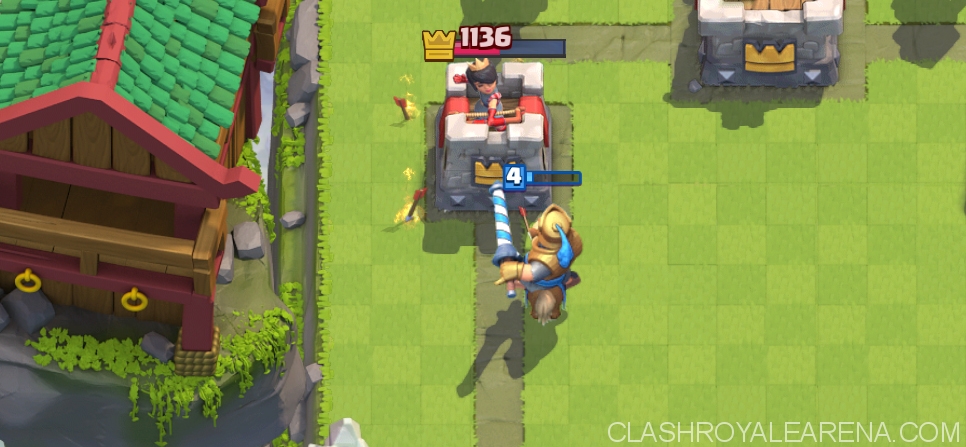How to Double Lane Pressure in Clash Royale
Guides By Clash Royal 2016-06-27 10:24:09
Example 1:
The first example I want to give is when your opponent deploys an expensive troop like the P.E.K.K.A, , , or . All of these are expensive in cost and require support, or are easy to counter. For example, the P.E.K.K.A is a very easy card to deal with when she is alone. But when she’s coupled with another troop such as a , she becomes a much bigger threat. Otherwise, you easily counter her with very little .
Lone P.E.K.K.A can be easily killed
So when your opponent deploys an expensive troop like the P.E.K.K.A, then the first thing in your mind should be to Double Lane Pressure. When your opponent deploys the P.E.K.K.A, he spent 7 , leaving him with only 3 to defend. So what you should do is to attack and pressure your opponent on the other lane. For example, if he deployed the P.E.K.K.A on the right lane, then you should attack and pressure the left lane. What this will do is, it will force your opponent to react and defend the left lane. This is when your opponent is most vulnerable because he’s only going to have about 4 to stop your push. So as long as you pressure your opponent on the left lane and keep pressuring him on the left with your , your opponent is going to have a very difficult time supporting his P.E.K.K.A, or , or , or . And then once that troop makes it to your side, you can easily counter it now because it’s going to be unsupported as your opponent spent all of his defending.
Example 2:
Another similar example is when your opponent deploys an expensive support troop like the or . You can immediately attack the opposite lane and force pressure on your opponent. This will then result in your opponent failing to support their or a tank such a , allowing you to easily counter that threat.
So as you guys can see, the Double Lane Pressure technique can be used any time your opponent deploys a troop that needs support to be effective or pose a lot of threat. A card such as the is fast and doesn’t need support to hurt you badly. So you can’t Double Lane Pressure against a push. For that, you need to focus on Counterpushing, not Double Lane Pressuring.
Example 3:
The other example I want to share about Double Lane Pressure is when you should initiate attacking both lanes. When is it the best time to attack both lanes?
This one is a little more advanced because it requires you to first scout your opponent’s deck and also your opponent’s moves.
For example, say you’re using the and in your deck. Both the and will do a lot of damage if they make it to your opponent’s tower, but that’s the main challenge, getting them to your opponent’s Arena Tower. So say that your opponent has and to easily counter both your and . So what you need to do now is form a plan and Double Lane Pressure your opponent to get to their Arena Tower. Because if you don’t Double Lane Pressure, sending your and together in one lane will allow your opponent to easily counter both of them with ease because both the and share similar weaknesses.
So what you should do is first send out your or with a combo in one lane. This will of course force your opponent into defending that lane. So say you deployed your on the left lane alone to basically bait your opponent into using his or . Your opponent probably thinks that he made a smart move and countered your push very easily. But what you’ve done now is created an opening on the right lane. Your opponent no longer has , as those were already deployed, leaving your opponent with just a to defend your push. So now you send in your on the right lane and couple him with to instantly wipe out the defending and deal incredible damage to your opponent’s tower.
This would not have been possible if you did not Double Lane Pressure. If you had sent in your and on the same lane with , then your opponent would have easily countered that with his and . And remember, since you’ve pressured your opponent on the right lane with your , this disallowed your opponent of supporting his , making it very easy to also counter the unsupported .


